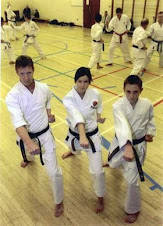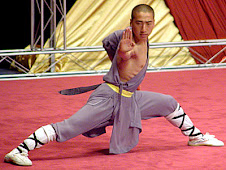 Who doesn't know Karate? A brave martial art. Almost entire populations in this world know it, a martial art from Japan.
Who doesn't know Karate? A brave martial art. Almost entire populations in this world know it, a martial art from Japan.Karate consists of two words, "Kara" and "Te". Kara means empty, Te means hand. So literally we could understand Karate as art of empty hand. Or in English term, we could interpret it as "unarmed art of fighting".
I am not a Karate expert, so we will not discuss the principles of Karate. It is better to discuss about its history.
In seventeenth century, Japanese conquered Okinawa. They banned all weapons of inhabitants, even farm devices must be stored in Government Ware Houses. The Okinawan people responded it by developing unarmed method of fighting to high level. They called it "Te", meaning Hand.
Local Chinese Immigrants contributed some of their ways of fighting, Chuan Fa. In this modern age, we call it Kung Fu.
After a long time, the name of "Te" changed into "Karate".
In 1922, an Okinawan Karate Man, Gichin Funakoshi, began to teach Karate in Japan. It became established in universities of Japan successfully. From this moment, Karate began its modern age.
It is short history about Karate's beginning. The beginning of Most Popular Martial Art.














